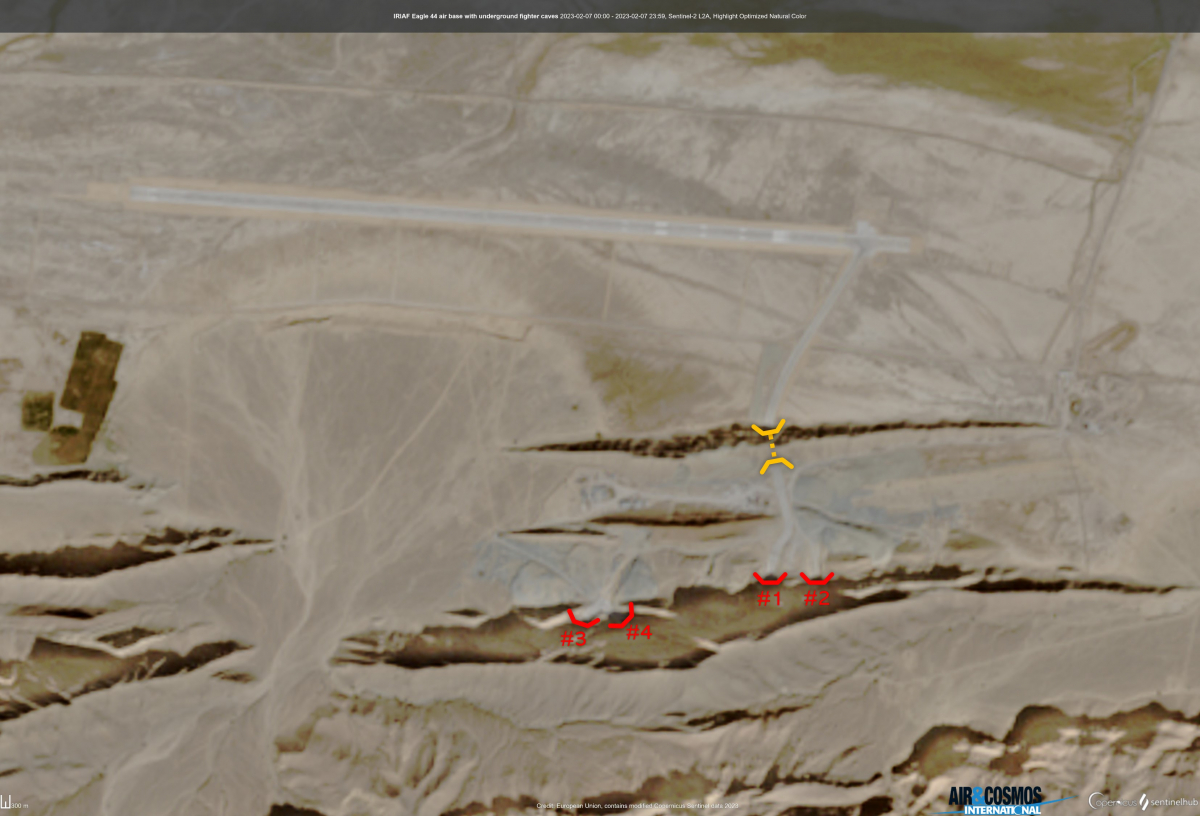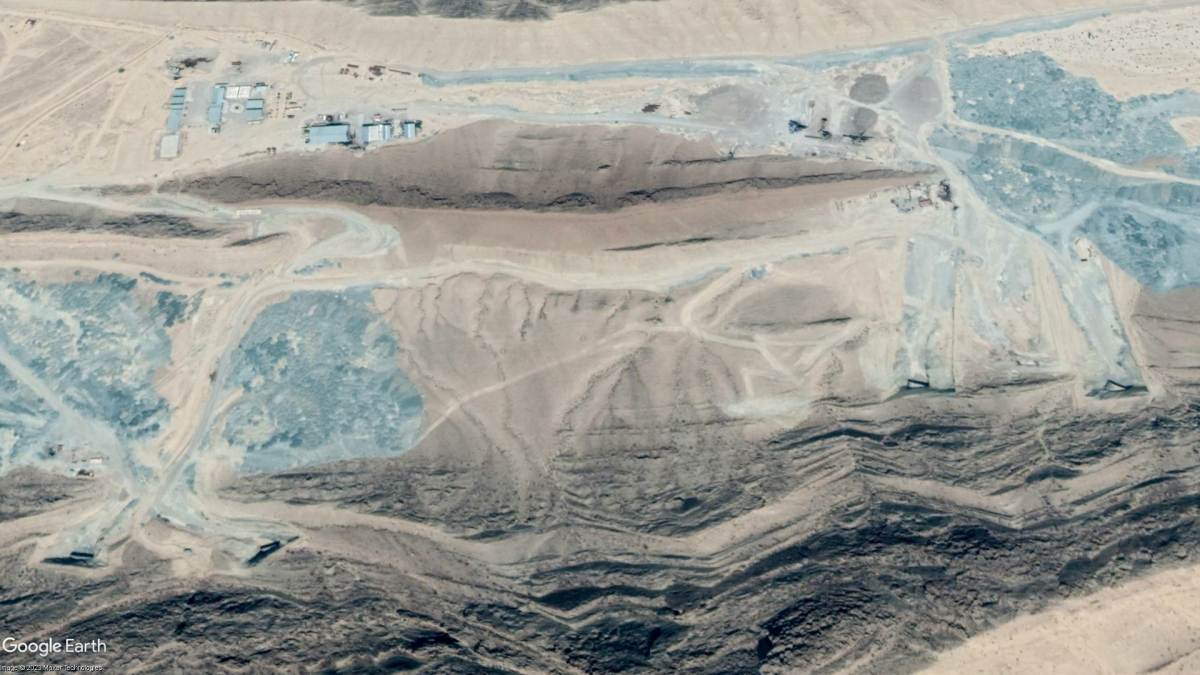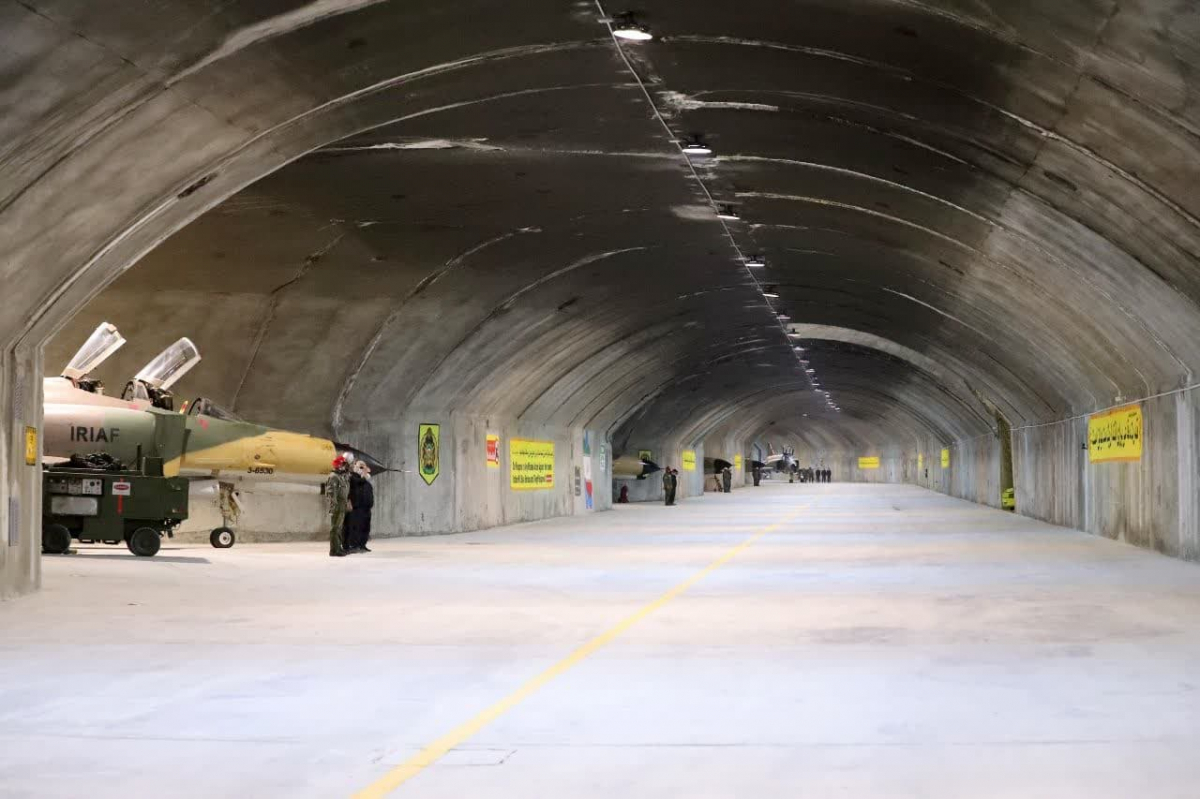Several videos from Iran confirm that the Eagle 44 air base has recently been put into operation. Its underground complex is used to protect fighter planes against possible air attacks. However, several details suggest that this base is only used for propaganda purposes and that its usefulness in case of war is very limited.
A new air base
On February 7, on the anniversary of the 1979 Iranian revolution, Iranian authorities opened a new air base, named Eagle 44. The base is unique in that it includes an underground complex used to park F-4D/E Phantom II fighter jets. The base is strategically located 120 kilometers northwest of the Bandar Abbas Naval Base (Hormozgan, Iran), headquarters of the Iranian Navy. It is also located not far from the all-important Strait of Hormuz.
The underground complex has four entrances, but satellite images of the area only confirm that only entrance 1 (#1 in red on the satellite image below) is connected to the runway. A pathway appears to have been built for entrance 2 but it is not as wide as the taxiway for entrance 1. In contrast, entrances 3 and 4 appear to be under construction.
Protected aircraft...
The concept of an underground complex for parking fighter aircraft is not new. Indeed, several air forces maintain underground complexes: China, Switzerland, Taiwan, former Yugoslavia,... The advantage is primarily defensive; the arrival of bombs that can penetrate reinforced shelters has made some installations vulnerable. Burying fighter planes under a mountain allows the use of tens and tens of meters of earth and various rocks to protect themselves from any air attack. These facilities, as shown at the very beginning of the video, are protected from a potential shockwave by heavy reinforced doors located at each entrance.
This type of facility also has drawbacks
- The takeoff and landing runway remains unprotected
- The enemy can slow the response of the fighter aircraft stored underground by attempting to bomb the mountain to create a rock slide in front of the entrances.


... but not so much than that!
However, Iran has distinguished itself from other countries with airplane caves; they are located close to the takeoff runway, which is not the case for the Eagle 44 base. In fact, an aircraft coming out of entrance 1 has to travel 1,400 meters before reaching the runway. This route is divided into three parts:
- 480 meters between entrance 1 and the tunnel,
- 120 meters of tunnels (in yellow on the image above),
- 800 meters between the tunnel and the runway.
So, in case of bombing of the only taxiway and the obstruction of the intermediate tunnel, the aircraft stored in the underground complex would be unable to reach the runway. This very big weak point raises the question: will this base really be used? Moreover, the underground complex seems to be very poorly equipped. For example, the Swiss caverns have a lot of equipment specific to the stored aircraft, such as all the equipment necessary for the daily maintenance of the aircraft once they have stopped or in anticipation of their take-off. This is absolutely not the case in the various videos available of the Iranian complex. Finally, most of the underground bases in the world also have open-air facilities: not everything can be stored underground. However, there are no buildings, hangars, control towers, parking lots for other planes,... between the entrances and the runway. Moreover, the C-130E/H Hercules transport aircraft visible in the video is simply located at the end of the runway.
Communication stunt
So this video seems to have been shot for propaganda purposes rather than a real announcement of the opening of a new airbase. The base may continue to expand, however, but a 2018 satellite image shows that in 4.5 years, only a tunnel, taxiway, and a single runway have been built outside. Work in front of entrances 3 and 4 has also not progressed in that same time period.
Finally, the United States and Israel are clearly shown as a threat: Iran's old F-4 Phantom IIs will never be a match for the many higher-generation fighter aircraft from these two countries.... not to mention the problem of maintaining these aircraft, of American origin, while the country has been under embargo (no American exports regarding possible parts for the Iranian F-4, F-5, F-14,...) since 1979.


Découvrez cet article sur Air&Cosmos

